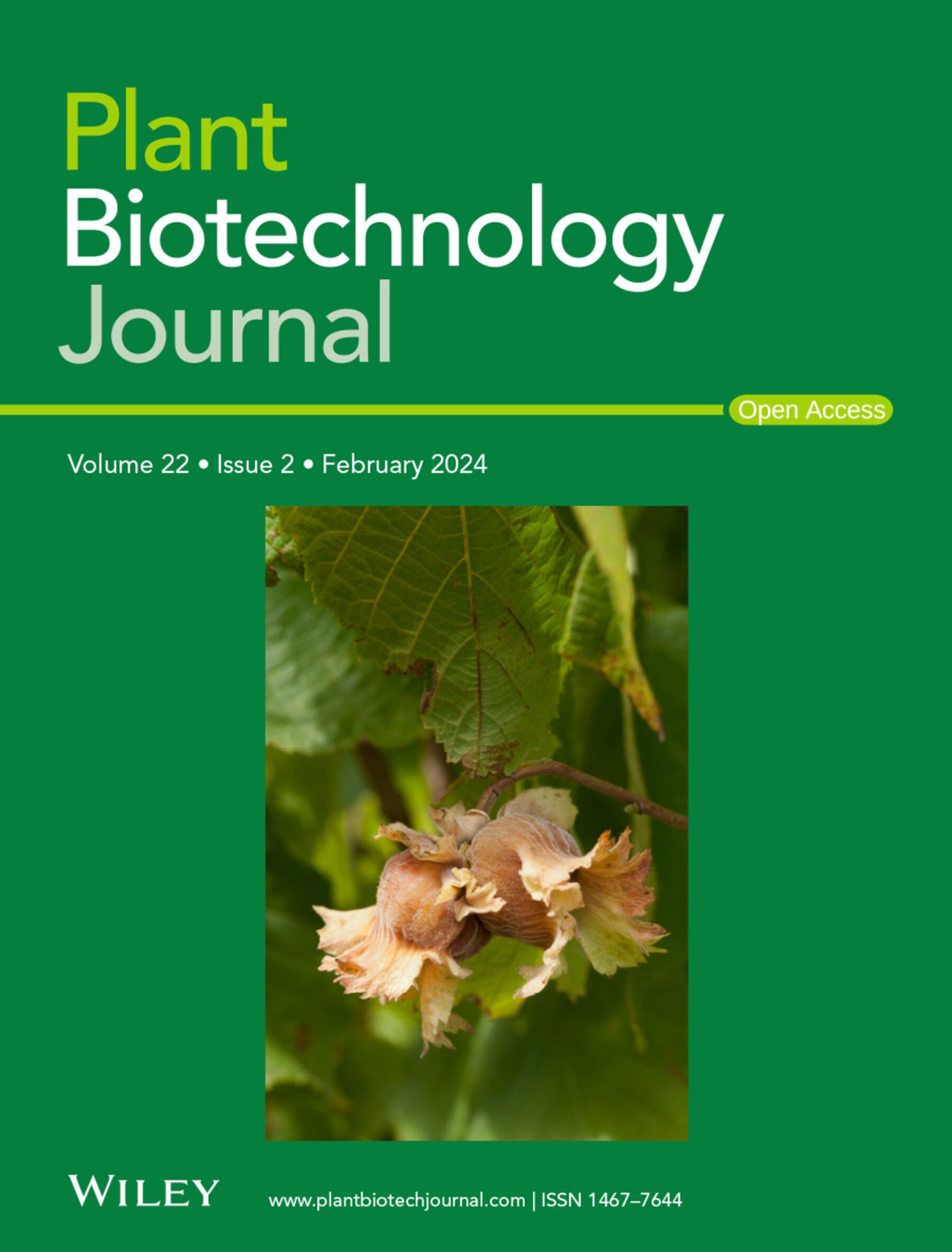The SCARECROW-LIKE transcription factor from Populus davidiana × P. bolleana simultaneously improved drought tolerance and plant growth through acetylation-dependent mechanisms
IF 10.1
1区 生物学
Q1 BIOTECHNOLOGY & APPLIED MICROBIOLOGY
引用次数: 0
Abstract
The GAI-RGA-and-SCR (GRAS) family of plant-specific transcription factors (TFs) is essential for development and stress tolerance, but their role in drought resistance and growth remains unclear. Here, we characterized the SCARECROW-LIKE (SCL) TF PdbSCL1 from Populus davidiana × P. bolleana, examining its role in drought response and growth. Overexpression of PdbSCL1 improved drought tolerance and growth, while knockout lines exhibited decreased drought tolerance and growth. Under normal conditions, overexpression lines showed a 16.7% increase in height and 14.6% in fresh weight compared with wild-type (WT). Under drought conditions, these increases reached 32.2% and 79.5%, respectively. PdbSCL1 regulates gene expression by binding to DNA motifs such as ABRE (‘CACGTG’), PCF (‘TGGGCC’), and NFY (‘CCAAT’). Drought-induced acetylation of PdbSCL1 at key lysine residues (106 and 444) is critical for its regulatory function. Mutations at these sites impair its ability to regulate gene expression, leading to reduced drought tolerance and growth. PdbSCL1 also interacts with a histone acetyltransferase 3 (PdbHAG3), which catalyses its acetylation, further enhancing drought resilience and growth. These findings highlight the essential role of PdbSCL1 acetylation in both drought response and growth promotion, suggesting its potential application in molecular breeding to improve drought tolerance and growth in poplar.来自大叶杨(Populus davidiana × P. bolleana)的稻草人样转录因子通过乙酰化依赖机制同时改善了植物的耐旱性和生长
植物特异性转录因子(GRAS)家族对植物的发育和抗逆性至关重要,但它们在抗旱性和生长中的作用尚不清楚。在此,我们对来自胡杨(Populus davidiana × P. bolleana)的稻草人样(SCL)基因PdbSCL1进行了鉴定,并研究了其在干旱响应和生长中的作用。PdbSCL1的过表达提高了水稻的耐旱性和生长能力,而敲除系的耐旱性和生长能力下降。在正常条件下,与野生型(WT)相比,过表达系的高增加16.7%,鲜重增加14.6%。在干旱条件下,这一增幅分别达到32.2%和79.5%。PdbSCL1通过结合ABRE (‘ CACGTG ‘)、PCF (’ TGGGCC ’)和NFY (' CCAAT ')等DNA基序来调节基因表达。干旱诱导PdbSCL1关键赖氨酸残基(106和444)乙酰化对其调控功能至关重要。这些位点的突变损害了其调节基因表达的能力,导致抗旱性和生长能力下降。PdbSCL1还与组蛋白乙酰转移酶3 (PdbHAG3)相互作用,催化其乙酰化,进一步增强抗旱性和生长能力。这些发现突出了PdbSCL1乙酰化在干旱响应和生长促进中的重要作用,提示其在分子育种中提高杨树耐旱性和生长的潜力。
本文章由计算机程序翻译,如有差异,请以英文原文为准。
求助全文
约1分钟内获得全文
求助全文
来源期刊

Plant Biotechnology Journal
生物-生物工程与应用微生物
CiteScore
20.50
自引率
2.90%
发文量
201
审稿时长
1 months
期刊介绍:
Plant Biotechnology Journal aspires to publish original research and insightful reviews of high impact, authored by prominent researchers in applied plant science. The journal places a special emphasis on molecular plant sciences and their practical applications through plant biotechnology. Our goal is to establish a platform for showcasing significant advances in the field, encompassing curiosity-driven studies with potential applications, strategic research in plant biotechnology, scientific analysis of crucial issues for the beneficial utilization of plant sciences, and assessments of the performance of plant biotechnology products in practical applications.
 求助内容:
求助内容: 应助结果提醒方式:
应助结果提醒方式:


